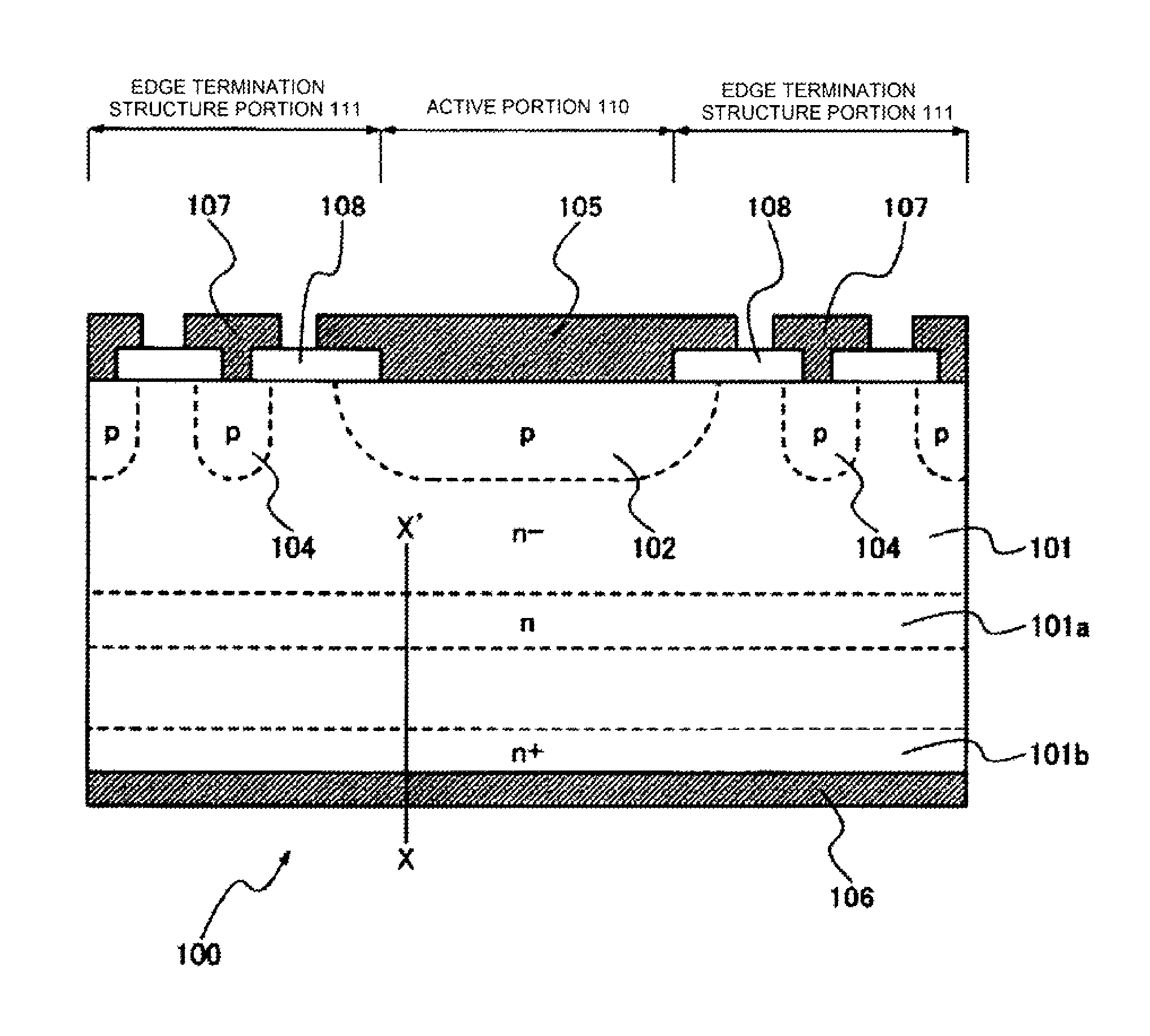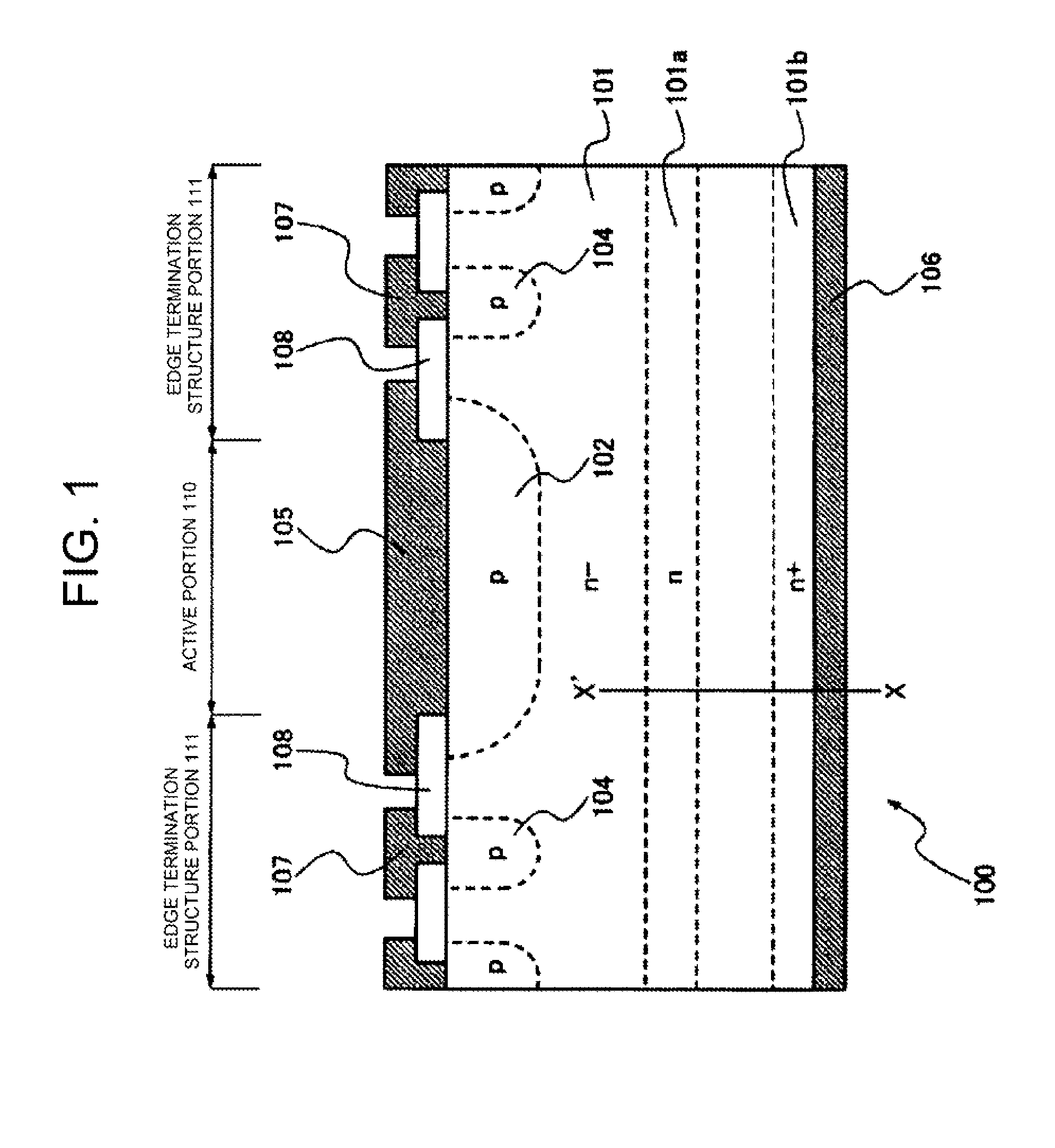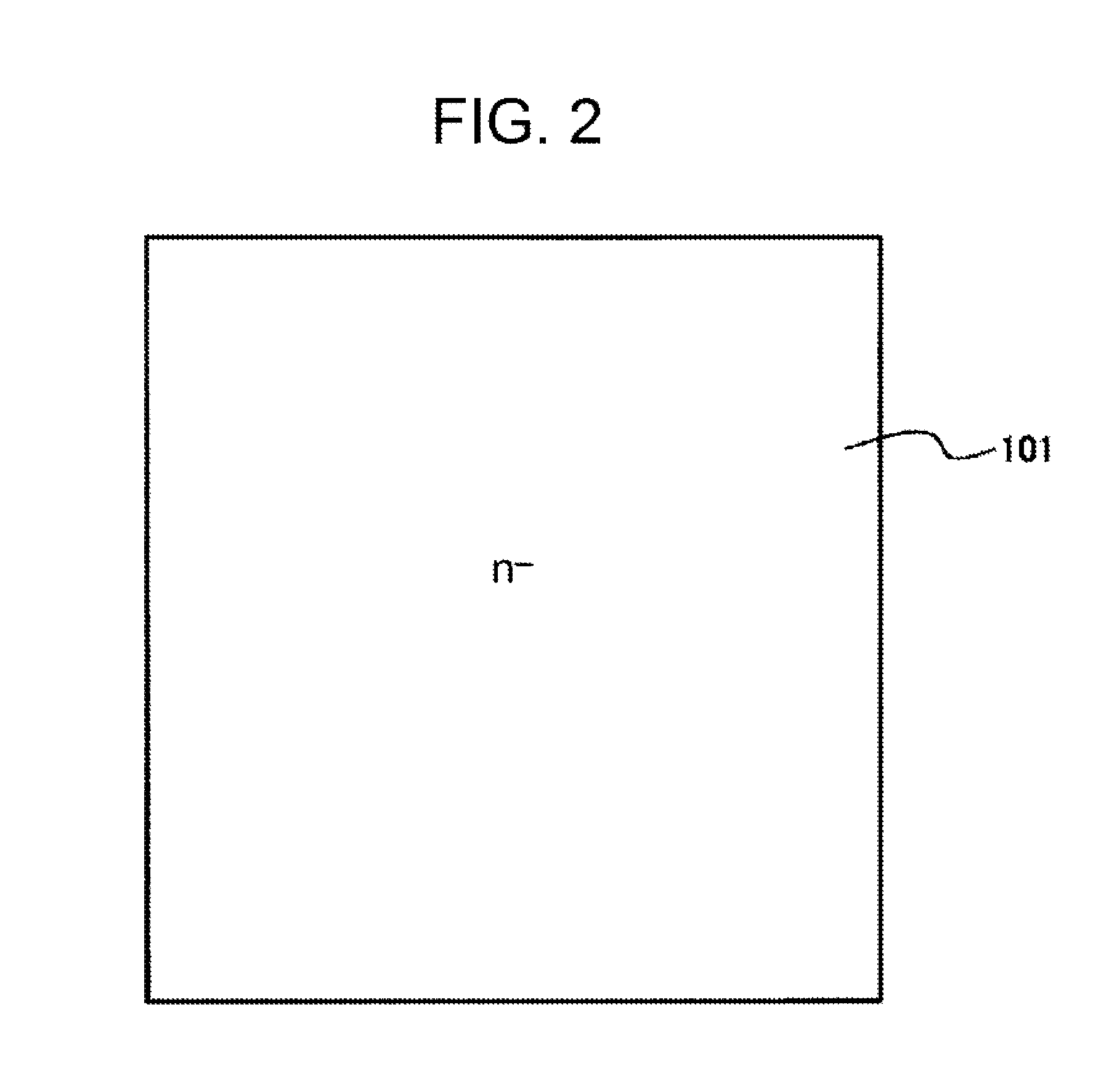Production method for a semiconductor device
a production method and semiconductor technology, applied in the direction of semiconductor devices, basic electric elements, electrical appliances, etc., can solve the problems of deteriorating the characteristics of the remaining defect, generating crystal defects in the silicon substrate, and increasing the leakage curren
- Summary
- Abstract
- Description
- Claims
- Application Information
AI Technical Summary
Benefits of technology
Problems solved by technology
Method used
Image
Examples
first embodiment
[0060]FIG. 1 is a cross-sectional view illustrating a diode as a semiconductor device according to the invention. An example of a semiconductor device 100 illustrated in FIG. 1 is a diode. However, the semiconductor device 100 may be an insulated gate bipolar transistor (IGBT).
[0061]In the semiconductor device 100, a p-type anode layer 102 is formed in a surface layer of a main surface of an n− semiconductor substrate (n− drift region) 101 and an n+ cathode layer 101b is formed in a surface layer of an opposite surface (rear surface). A p-type layer, which will be a termination region 104, is formed in the outer circumference of the p-type anode layer 102. The semiconductor device 100 controls the doping concentration of n-type impurities at a deep position from the front surface to the rear surface in order to reduce voltage oscillation which causes noise during switching.
[0062]FIG. 1 illustrates a state in which, after proton implantation, annealing is performed in a hydrogen atmo...
example
[0072]Next, the characteristics of the semiconductor device 100 having the above-mentioned structure will be described. FIG. 9 is a characteristic diagram illustrating the measurement result of a carrier concentration distribution in the depth direction after annealing in the process of producing the active portion of the diode according to the first embodiment. FIG. 9 illustrates the measurement result of the carrier concentration distribution in a portion corresponding to the X-X′ axis of FIG. 1 by a spreading resistance analysis (SRA) method when annealing is performed at a hydrogen concentration of 0% and 4% in a proton furnace (which holds for FIGS. 22 to 24). The carrier concentration measured by the SRA method substantially indicates doping concentration when the mobility of carriers is equal to an ideal value of a crystal. In contrast, when there are many crystal defects or crystal disorder is large, mobility is reduced. Therefore, spreading resistance increases and low carr...
second embodiment
[0077]Next, a method for producing a semiconductor device according to a second embodiment will be described. The method for producing the semiconductor device according to the second embodiment differs from the method for producing the semiconductor device according to the first embodiment in the acceleration energy and annealing conditions of a proton. The method for producing the semiconductor device according to the second embodiment is the same as the method for producing the semiconductor device according to the first embodiment except for proton annealing conditions.
[0078]Specifically, first, similarly to the first embodiment, a process from the formation of a p-type anode layer 102 to the implantation of a proton 601 is performed (FIGS. 2 to 6). The acceleration energy of the proton is, for example, 1.1 MeV (a range Rp is 18 μm). Then, for example, annealing 701 is performed at a temperature of 340° C. for 10 hours in an atmosphere in which hydrogen concentration is equal to...
PUM
| Property | Measurement | Unit |
|---|---|---|
| temperature | aaaaa | aaaaa |
| temperature | aaaaa | aaaaa |
| temperature | aaaaa | aaaaa |
Abstract
Description
Claims
Application Information
 Login to View More
Login to View More - R&D
- Intellectual Property
- Life Sciences
- Materials
- Tech Scout
- Unparalleled Data Quality
- Higher Quality Content
- 60% Fewer Hallucinations
Browse by: Latest US Patents, China's latest patents, Technical Efficacy Thesaurus, Application Domain, Technology Topic, Popular Technical Reports.
© 2025 PatSnap. All rights reserved.Legal|Privacy policy|Modern Slavery Act Transparency Statement|Sitemap|About US| Contact US: help@patsnap.com



